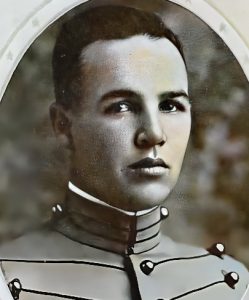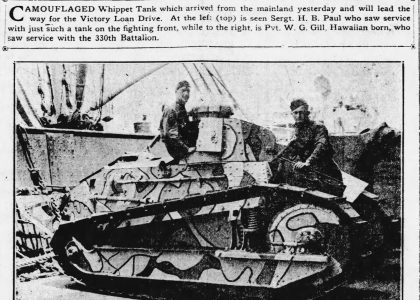
Henry Henley Chapman was born on August 8, 1894, at Fort Assinniboine, Montana—a fitting birthplace for a child of the United States Army. Military service ran in his blood. His father, Captain William H. H. Chapman, was a graduate of the U.S. Military Academy and a veteran of the Cuban and Philippine campaigns. His grandfather, Major General William S. McCaskey, had served through the Civil, Indian, Cuban, and Philippine Wars. From even further back, the lineage traced to Henry Henley Chapman of the Maryland Dragoons, a Revolutionary War soldier and original member of the Society of the Cincinnati.
With such a heritage, Henry’s path to West Point seemed inevitable. He entered the U.S. Military Academy on June 15, 1913, and graduated four years later in the accelerated war class of 1917, commissioned as a Second Lieutenant in the 20th Infantry. A rapid series of promotions followed: First Lieutenant by May 1917 and a temporary Captain in the 39th Infantry by August.
After a brief assignment at Fort Douglas, Utah, Henry was selected as aide-de-camp to Brigadier General Samuel Faison at Camp Sevier, South Carolina. There, he helped train North Carolina National Guardsmen, who would go on to form the 119th and 120th Infantries of the 30th Division.
In May 1918, Captain Chapman deployed to France with the 39th Infantry. He saw combat with the 4th Division during the Second Battle of the Marne—one of the pivotal engagements of the war. On July 18 and 19, his unit advanced under fire, successfully taking all assigned objectives. His leadership during those operations earned commendations from senior officers. On August 1, while repositioning his company at night, German aircraft struck. The blast threw him against a tree, causing severe concussion injuries that led to his evacuation.
But he was not done.
After recovering, Chapman returned to the front and was reassigned to Company F, 120th Infantry—just ten days before his final battle. On September 29, 1918, during the major offensive to break the German Hindenburg Line near Cambrai, France, he led his men over the top in the opening wave. Under fierce German artillery fire, Captain Chapman was killed in action. He was 24 years old.
In a letter following his death, his commanding officer wrote, “There was not an officer in the regiment, old or young, whose death could have caused any more universal sadness and regret.” Another remembered him as “greatly beloved by all officers and men with whom he came in contact.”
At the time of his death, Henry’s wife, Urania, was living with their newborn daughter, Margaret Hudson Chapman, in Patchogue, New York. He never met his child.
Captain Henry Henley Chapman’s name is etched into the bronze of the War Memorial Natatorium in Waikīkī—a tribute from Hawaiʻi to those who served in the Great War. Far from the field where he fell, he is also remembered in Pacific Grove, California, where the local Veterans of Foreign Wars post was named in his honor—the town’s first son to fall in France.
Sources:
Find A Grave.com
Biographical register of the officers and graduates of the U.S.M.A.
Veterans Do P.G. Honor in New Post. (1930, October 24). Pacific Grove Tribune, 1.


